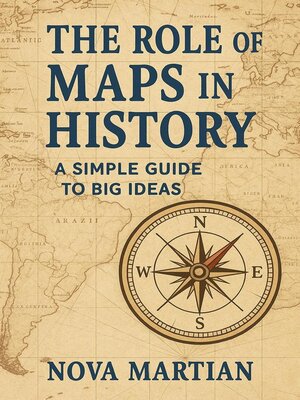
Sign up to save your library
With an OverDrive account, you can save your favorite libraries for at-a-glance information about availability. Find out more about OverDrive accounts.
Find this title in Libby, the library reading app by OverDrive.



Search for a digital library with this title
Title found at these libraries:
| Library Name | Distance |
|---|---|
| Loading... |
Discover how maps have shaped our understanding of the world in *The Role of Maps in History: A Simple Guide to Big Ideas*. This accessible and comprehensive guide begins by unraveling the fundamental nature of maps and their profound significance throughout human civilization. From ancient artifacts guiding early societies, through maps as tools of power and knowledge, to visual expressions that capture both myth and reality, the book illustrates the pivotal role cartography has played in recording, envisioning, and influencing history.
Tracing developments across continents and eras, the book explores mapping traditions from Babylonian clay tablets to the scientific breakthroughs of the Renaissance, the navigational charts of the Age of Exploration, and the rise of national mapping agencies. Readers are invited to see how maps have not only propelled exploration and defined empires, but also shaped borders, guided policy, and influenced everyday life. Special attention is given to the use of maps in social movements, the arts, propaganda, and justice—demonstrating their power as instruments of persuasion, protest, and cultural memory.
Rounding out this engaging journey is an insightful examination of the digital transformation in cartography, including Geographic Information Systems, real-time mapping, and the implications of open data and citizen science. Readers will gain critical skills for navigating modern maps and understanding their limitations, biases, and ethical quandaries. Both a primer and a thought-provoking reflection, this book encourages us to recognize maps as living documents—tools for thinking, learning, and participating in our ever-changing world.







